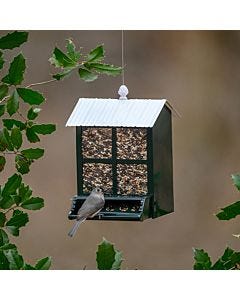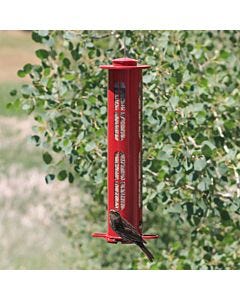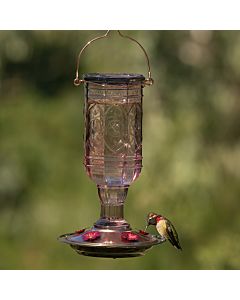BIRD MIGRATION FACTS
BIRD WATCHING 101 »
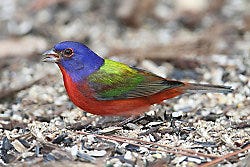
MIGRATION FACTS
There’s a lot to understand about bird migration. These questions provide the basic answers on bird migration. Click the “read more” to learn even more about each.
What is migration?
Animal migration is the seasonal movement of a species from one distinct area to another. (Read More)
Why do birds migrate?
Birds migrate to avoid harsh weather, to reach breeding grounds, to avoid predators and to diminish competition for food. (Read More)
How do birds find their way?
Birds migrate by relying on a variety of senses, including some that humans don’t possess. (Read More)
When do birds migrate?
Most birds migrate during the spring and fall in an effort to reach a habitat that is seasonably hospitable to them. (Read More)
What are migratory birds?
A migratory bird is any bird species that seasonally moves back and forth between at least two distant habitats. (Read More)
Do all birds migrate?
Which birds migrate?
There are thousands of bird species that are considered migratory birds. From hummingbirds to penguins, the list is huge. (Read More)
Where do birds migrate?
Birds that spend at least one season in North America usually migrate north and south, following routes bird scientists call flyways. These routes can take them from the tip of South America to the Arctic Circle in Canada and Alaska. (Read More)
Which birds do not migrate? Not all birds migrate. Those that don’t migrate are called resident birds. (Read More)
WHAT IS BIRD MIGRATION? WHY DO BIRDS MIGRATE?
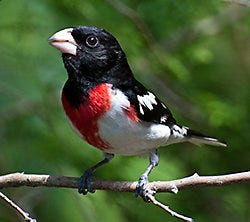 Bird migration is the twice-a-year travels birds take to find better living conditions. The benefits to migrating can include access to suitable breeding habitats, avoiding weather that is too cold or too hot, to escape growing predator populations and to find more abundant food sources.
Bird migration is the twice-a-year travels birds take to find better living conditions. The benefits to migrating can include access to suitable breeding habitats, avoiding weather that is too cold or too hot, to escape growing predator populations and to find more abundant food sources.
- Breeding – Many bird species will only breed and successfully rear their young under certain environmental conditions. Whether they require certain temperatures, the presence of specific food and nesting material or a common location, birds can be incredibly sensitive to these conditions.
- Weather – Another migration benefit is that birds can escape the harshest weather in both locations. They may leave an area that grows hotter and move to one that’s more temperate or leave one that’s growing colder to go to a warmer one.
- Predators – Scientists believe one reason that many birds leave tropical areas for locations in the United States and Canada is because predators in Central and South America are more active from March through September. This time period coincides with many predators’ cycles of reproduction – they are mating and raising young at this time, which increases their food needs. Migratory birds can avoid this dangerous time of the year by departing for North America where fewer predators live.
- Food – The availability of food is also important to birds, and often triggers their migration. As the summer ends in northern latitudes, there’s often an ever-diminishing supply of the food many birds eat – insects, seeds and nectar. For birds that prey on fish, water supplies may ice over. On the flip side, there’s a good reason why birds don’t stay in warm, tropical climates all year long – the competition for food is positively fierce. By traveling north, there is far less competition for a truly abundant supply of food. After all, even the coldest regions of Alaska and Canada can support insects and plants for a short time, and that is an attractive resource to birds.
Bird Migration Triggers & Causes
With all the benefits of migration, you wonder “Why do some birds not migrate?” The answer is simple – they’ve adapted well enough to one environment to stay there all year-round. They’ve found enough food, aren’t bothered by temperature extremes, have defenses against their predator threats and nest there, too.
There are a number of triggers that tell a bird to migrate. These can help explain why birds migrate as much as understanding the benefits of migration. Still, scientists can’t say that just one thing in particular triggers birds to migrate, instead they believe it’s a mix of any number of them.
- Food scarcity – Birds may recognize that food opportunities are disappearing. This can include the disappearance of insects or the lack of fruits, berries, nuts or seeds.
- Changes in duration of sunlight – Depending on the season, days shorten or lengthen and those changes may be detected by birds.
- Changes in the angle of sunlight – As the Earth rotates around the sun, the angle of the sunlight changes with each season. These variations may be a migration trigger.
- Temperature changes – Along with the changes in sunlight angle, the average temperature in an area changes with each season, which could be another trigger.
HOW DO MIGRATING BIRDS FIND THEIR WAY?
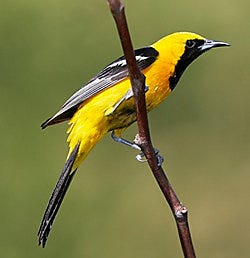
Since the phenomenon of bird migration was first uncovered, scientists have been asking “How do birds find their way during migration?” and it turns out that they still aren’t exactly sure. This is because it seems that different birds use different methods and some birds use a combination of multiple methods.
- Sun and Stars – By keeping the sun or a set of stars to one side of their body, it’s possible for birds to navigate successfully to distant locations. It’s assumed that the birds have a method for adjusting their route as these heavenly bodies spin through the sky.
- Magnetic fields – Using a sense that humans don’t have, some birds can apparently see the magnetic fields that encircle the Earth. When their instinct to migrate is triggered, the birds know to fly to particular points within the magnetic field. In fact, some birds actually have iron-rich organic material in their bodies. Some scientists say this material could be used to guide them along these magnetic fields.
- Landmarks – Other birds are able to navigate by using landmarks as their guide. The major landmarks usually include coastlines, mountain chains, forests, lakes and rivers. Others recognize familiar stop-over locations, when they reach these areas they know they’re on the right track.
- Sense of smell – Some scientists have even theorized that some birds navigate by smell. The idea is that these birds know to stop their migration when it finally smells right. Further, they orient themselves by detecting trace scents of familiar odors and they begin to follow them back home.
So, despite these theories, the answer to “How do migratory birds find their way?” is largely a mystery since the exact method for each species hasn’t been pinned down. With all these options, it’s hard to pinpoint the right one for each without extensive studies.
Birds Get Lost During Migration
Also of note is the fact that sometimes migratory birds get lost! Some migrating birds will overshoot their destination, often appearing far outside their normal ranges. This, of course, delights bird watchers who relish in the opportunity to see a rare bird.
Other birds engage in “reverse migration,” a problem often found in young birds. These youngsters often make their migratory journey in the completely opposite direction from their expected route. Why? Bird experts believe these birds misread the migration cues or simply their “programming” has gone wrong. The result is that they can be hundreds, or even thousands, of miles outside of their species’ typical range.
Perkypet.com is the top destination to find quality Wild Bird Feeders and Accessories. Perky-Pet® and K-Feeders wild bird products are trusted brands to bird lovers everywhere. Interact with nature, relax and build memories that last a lifetime by conveniently ordering from perkypet.com. Happy Bird Feeding!





